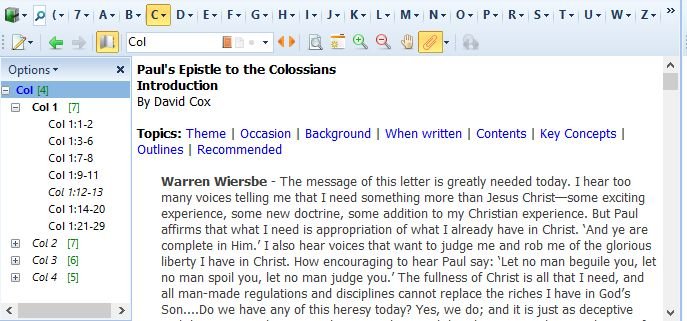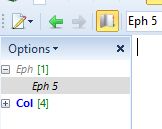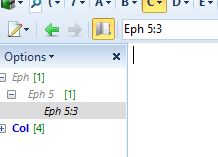theWord Book Summary, theWord chapter summary
In this class, we will learn about the book and chapter summaries. Note that theWord has a lot of features that other programs don’t even consider, much less have.
First, the Commentary Example and Structure
Examine this typical commentary work.
 In theWord program, every verse in the Bible has a corresponding entry in a theWord commentary. But there are extras that often come in a paper and ink commentary but most Bible programs do not take into consideration.
In theWord program, every verse in the Bible has a corresponding entry in a theWord commentary. But there are extras that often come in a paper and ink commentary but most Bible programs do not take into consideration.

Buy me Burrito! Burritos are delicious. Meat, beans, sour cream, veggies, wrapped in a tortilla. We all enjoy burritos! But you know that you cannot have what is good without somebody paying for it. If you have enjoyed things on my website, please consider helping me maintain the expenses of this site. Consider at least a one time donation to this ministry of $10 or $20 dollars? Very infrequently (one person every 3-6 months) will somebody donate something. Usually that is all I receive from 34 websites! Yet, from my download statistics, I have about 96 gigabytes total being downloaded monthly from all of these websites. Be a blessing to me and donate any amount. It would be really great if you could gift me and my wife (who splits a burrito?) this money so that we could enjoy eating out at least once in a while. (I pay the expenses for these sites out of our living expenses.) God will richly bless you and repay you for your generosity. 1 Timothy 5:18 For the scripture saith, Thou shalt not muzzle the ox that treadeth out the corn. And, The labourer is worthy of his reward. If you received some value from my websites, consider at least a small donation. A big donation would really be nice, too, though.
Donate to David Cox Ministries.
Two of these things are the Book Summary and the Chapter Summary. There is no such thing as a Verse Summary because the actual verse entry is the summary. Note that although each verse has its own entry (which the commentary creator decides if he wants to make that commentary entry a single verse or a spread of verses), this is basically like what we would have in a Book and Chapter Summary. Note the above image has for example, “Col 1:7-8” where instead of having individual entries for verse 7 and verse 8, I combined them. This is because of (1) how the original commentator has his commentary, and (2) because the text is better treated by these grouping than individually.
More Articles from this Category
- Using theWord Commentary Links
- Using the Commentary Template
- Using Inline Commentaries
- theWord Book Summary, theWord chapter summary
- New Optimized Commentaries
- Module Set: Commentaries
So in a typical theWord Commentary, the Commentary creator puts in the entries and ranges he desires. In the above image, I am writing a commentary on Colossians. I don’t have any other books in this commentary.
Also, note that the Book has Summary Notes (that is the entry selected in the image) and that Colossians 1 has Chapter Summary Notes. Compare the difference between “Col 1” and “Col 2“. Col 1 (Bold and no italics) has summary notes attached to it for Chapter 1, but there are no notes for “Col 2” so it is not bolded and instead it is in italics.
As a side note, every commentary needs the Book of the Bible where it occurs as a parent topic over it. Each verse commentary needs its Book and Chapter parent over that also.
I just added a new chapter “Eph 5” to this commentary, and theWord automatically added its parent “Eph” over it. Since I didn’t put anything in the Eph 5 Summary nor the Ephesians Summary entry, they are both in italics. “Eph 5” is a little darker because that is the currently selected topic.
Note that when you add Eph 5:3, BOTH the parent chapter summary is added and also the parent Book summary are both added. They are italicized and not bold until they actually contain information, even a blank space.
Viewing Book and Chapter Summaries
So how do you view and/or edit these summaries? You cannot edit them if the module is locked or encrypted. You must have it opened as a user-editable module in order to edit them.
So the bad news is that there is no way to view these summaries except if you open a BookView of the commentary, and
then there they will appear. But none-the-less, this is not so much of problem.


